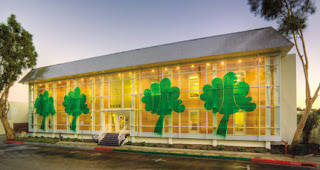Did you see the film The Race to Nowhere? Well, if you didn’t, you should. I’m not here to critique filmmaking (as if everyone needs to be Ingmar Bergman), but this film really gives one food for thought. Not to mention also giving you dyspepsia, and a bout of depression as you contemplate the state of the world, and more specifically, the state of education in this country. Oy vey.
Basically, as stated in the petition on the film’s website, Race to Nowhere wants to “end the race” by implementing these basic ideas:
• Support a broad based quality curriculum (including the arts and physical education) and teaching in every school;
• Eliminate the competitive allocation of resources based on high stakes tests;
• Reflect quality research and practices supporting the developmental needs of “whole” children and adolescents;
• Foster diverse talents, develop 21st century and citizen skills and encourage the growth of individual students and teachers and respect for both; and
• Restrict the number of hours students are in school and working on schoolwork outside of school hours.
Clearly, there are many problems with our educational template. Some caused by politicians, some caused by teachers unions, some caused by Boards of Education, and yes, some caused by us – the parents. When I was thinking about schools for my son, and then, in turn, for my daughter, I pondered many of these issues as a concerned and relatively well-informed parent. After seeing The Race to Nowhere I thanked my lucky stars to have chosen the educational path that we did for our children and I thanked my lucky stars for Wildwood School. Miraculously, Wildwood was addressing almost every single issue discussed in the film, and they had been doing it long before the topic became the “it” subject across the country.
The thought process that led me to Wildwood School was as follows: Of course, I am interested in my child doing well academically. But, I believe that doing well in school is a desire that has to be ignited in children; they have to associate school with that which is enjoyable. If school starts reminding a child of what it feels like to take medicine, well, you’ve lost them already. I figured that if I wanted a shot for my kids academically I had to pick a place where they would really learn to love learning. I had to pick a place where the journey to academic mastery was as important as the mastery itself. I had to pick a place where children could be children, and where joy in the classroom didn’t compete with test scores. Luckily, I found Wildwood.
Here is how Wildwood embraces the ideas proposed in The Race to Nowhere:
Wildwood uses Best Practices, which are philosophies and practices based upon 32 years of research from the Harvard Graduate School of Education. This ongoing study has looked into how the brain works and how students, all students, learn best. See, here at Wildwood, educational research is put into practice. Wildwood has a learner centered curriculum, which means that the kids really like learning! They get to be part of their own learning process. Now come on, how cool is that? Don’t you wish you’d gone to a school that did that?
Wildwood assesses children beyond standard letter grades by giving a multi-dimensional picture of student growth. The whole child is evaluated, so you really know how your child is doing, not just how they are doing on a test.
Homework isn’t assigned arbitrarily, and isn’t formalized until 3rd grade.
Route memorization and cramming useless facts and figures into your head is NOT what is happening at Wildwood! Instead, Wildwood incorporates Project Based Learning, which has been proven to be one of the most effective ways that children learn. Really. Google it. Project-based learning (PBL): is an approach for classroom activity that emphasizes learning activities that are long-term, interdisciplinary and student-centered.
And don’t fool yourself, kids at Wildwood work really hard, and they learn all the things that they need to be competitive for college and in life.
It’s just that they like doing it a little more than at other schools and they won’t get an ulcer before they graduate.
I found The Race To Nowhere, frankly, to be a calling card for Wildwood. I watched some of my friends at more traditional schools give serious pause to some of their choices. They started cutting back on extracurricular activities for their kids, slowing down a bit, toning down the pressure, and maybe giving a second look at Wildwood come Middle School application time…
And I smile, because I remember the fable of the tortoise and the hare.




